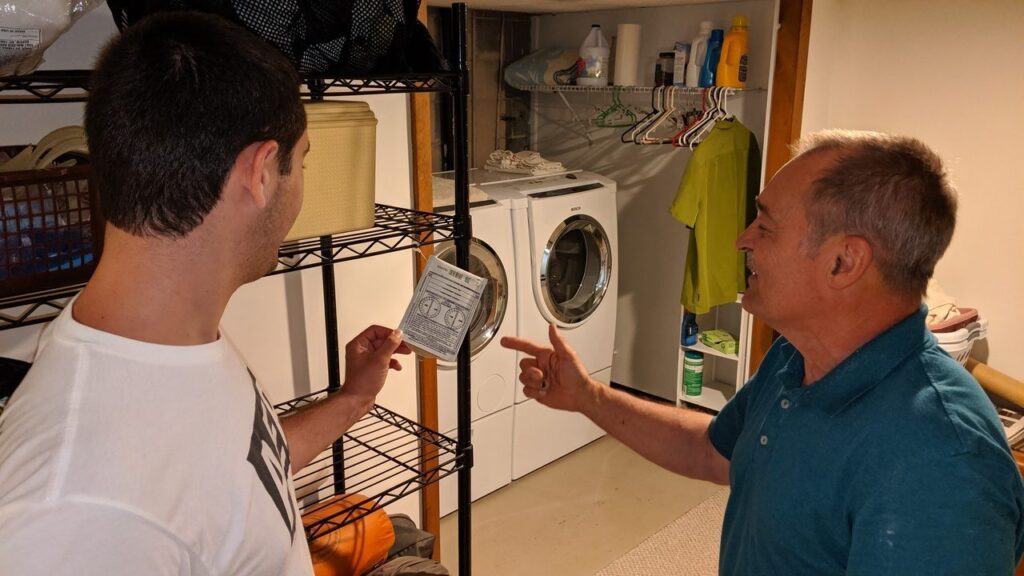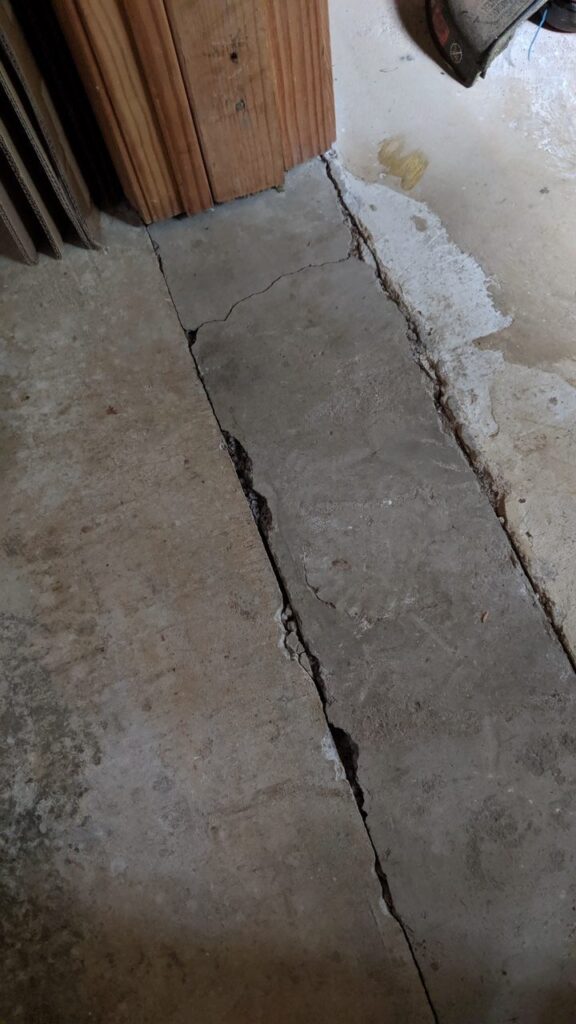When you buy a new house, is radon on your radar? In Western North Carolina, the answer should be yes.
Radon is an odorless, colorless radioactive gas which arises from uranium and thorium deposits in soil throughout the geology of the mountainous region we call the Southern Appalachians. Put simply, naturally occurring uranium, deep in the bedrock, decays in stages and gives off the gas and/or irradiated particles that we call radon.
Radon is in the air, which also means it can exist between soil particles, within rock, or within the groundwater. In extremely low levels, such as in marble or granite countertops, it’s not problematic.
But in excess, and particularly when inhaled into the lungs, it can become deadly. The microscopic, radioactive particles get trapped, and when they release small bursts of energy into lung tissue, the risk of lung cancer rises exponentially.
Scientists at the National Institute of Health estimate that about 20,000 lung cancer deaths annually may be attributed to radon. The consensus suggests there is no safe level of radon in one’s home, due to its cumulative effect over time. In any event, a measured radon level of 4.0 picocuries or greater indicates that the home’s inhabitants are at significant health risks from radon exposure.

In Western North Carolina and across the mountains of the southern Appalachians, home buyers and owners should insist on radon tests. This entire region is in a “red zone,” or high-incidence area at risk for radon. Federal mapping of reported radon measurements shows that Buncombe and Henderson counties are in a zone that’s particularly conducive to high levels of naturally occurring radon.
Micro-zones of local radon incidence also exist throughout the entire southern Appalachian region including Western North Carolina, upstate South Carolina, Eastern Tennessee, and North Georgia. These micro-zones can result in varied radon results even between neighboring houses, and given the swath of radon that runs underneath the region’s topography, all homeowners need to test to be on the safe side.
Radon testing is currently optional in North Carolina, though this may change in the future. The Department of Health in the county of your new residence or the county home inspector will be able to definitively answer your questions about state or town laws. The EPA also has a set of solid guidelines to follow for those who choose to test for radon, regardless of whether it is legally required.

The good news is that radon testing is both inexpensive and something most homeowners can do themselves at a cost of less than $20 for one sample that’s hung for three to seven days. It is most important to sample the lower parts of the home where you spend the most time such as the basement family room, or the crawl space from which your air system draws. In real estate dealings, everyone involved should insist on a qualified, licensed radon professional.
The downside for do-it-yourselfers is that one radon test won’t adequately assess radon risks. It is better to test a range of samples over time and conditions, pulled from areas such as the crawl space, particularly at times when the house is warmer than the outside air.
To understand how radon works, you’ll want to think about the way your house breathes.
The house exhales warmer air due to the “stack effect.” Hot air rises through the ceiling and finds ways to escape outside. Mechanical devices may also drive the breathing of the house. When turned on, these devices move air through the air pathways. Radon levels are highest when the stack effect is greatest.
Now, let’s consider the inhale side of your home. When a barrel full of air leaves the home, the same volume must be pulled in. Radon, when occurring, is pulled in with the home’s inhale.
So where does radon originate? The biggest culprits may be found in below-grade foundation walls. Cracks in the foundation or wall, coupled with contact with soil that has a high radon content, forms a primary pathway through which radon can seep into one’s home. Exposed soil under a slab or crawl space can also prove problematic. As the suction of the home’s exhale pulls air into the structure, radon particles now have a clear pathway into the house.
Mitigation efforts will be different for each home, but homeowners can begin by caulking and sealing cracks in slab floors or foundations to block places where radon enters the structure. Attention should be placed on any unsealed or uncapped holes in the slab flooring or below-grade walls; plumbing, gas or electric lines; or tiny faults in construction.
Radon-reduction systems can make a dramatic difference. Suction under the slab or under the plastic in the crawl space may be needed to exhaust the air under the slab so no radon particulates can be drawn in. In other cases, ventilation may be used to bring in fresher outdoor air and dilute low-level radon situations in the home. Lastly, net-positive air pressure may be used to blow air into the house, pushing radon out. Whatever the case, levels can be reduced by as much as 99 percent overall, increasing the healthiness of your home.
Though these types of measures sound costly, they’re not out of reach. Of course, the larger and more complex the house and its systems, the greater the number of possible interventions needed and the higher the potential cost. Still, most radon remediation jobs average in the $1,500 to $2,500 range. That’s less than the costs associated with moving, and it protects home and personal health, so it’s worth doing.
Rick Bayless is an award-winning, National Environmental Health Association-certified home consultant and author of “Mold in the Southern Appalachians: Identifying, Preventing and Managing Mold Issues and Mold Related Illness.” He is the owner and founder of A Healthier Home LLC, Western North Carolina’s leading environmental home health services provider. Connect with Rick at ahealthierhomenc.com.
You can also view this article as it was originally published on pages 56-57 in the 2019-2020 edition of the directory.

